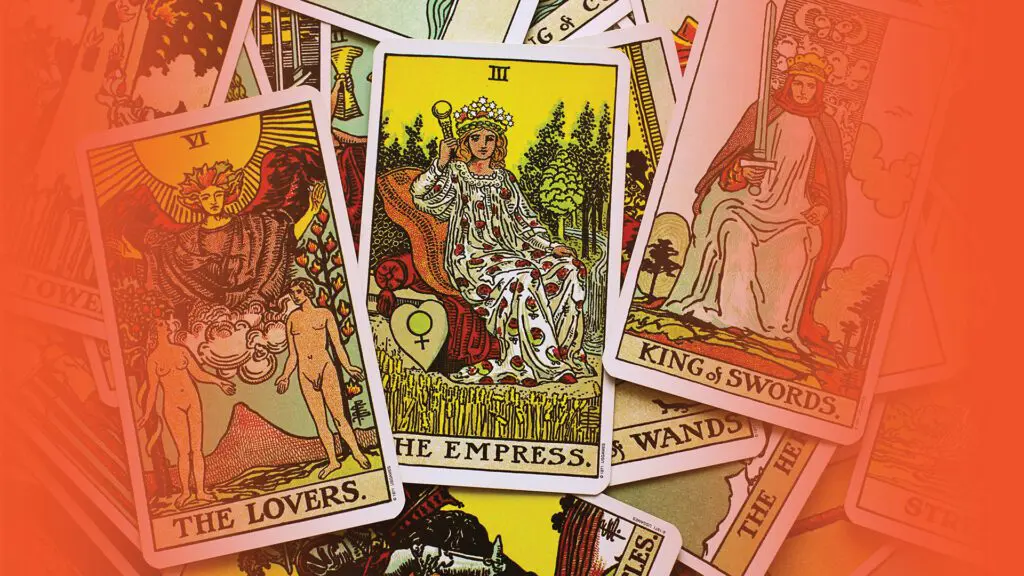This course examines the Tarot not only as a tool of divination, meditation, and active imagination but also as a way to explore the structure and dynamics of the psyche as understood in Jungian psychology. The set of 78 cards which comprise the Tarot will be examined using significant concepts from Jungian Psychology, including the Self, archetypes and complexes, the structure of the dream, and the synthesis of personal and collective energies in life. Participants will move between the Tarot and Jung’s Model of the Psyche as they increase their understanding of both.
The course will also explore both the enactive and receptive uses of the Tarot for personal growth and to facilitate the process of individuation. Correspondences between the various “sub-decks” of the Tarot and arenas of personal experience will be described, and the major aspects of personality as understood by Jungian psychology will be explored through the major and minor arcana.
The suits of the minor arcana (cups, wands, swords, and pentacles) will be compared to Jung’s typological categories and the quaternity of medieval elements, and an exploration of the underlying implications of the “challenge” and the “gift” cards will be discussed.
In each class, participants will be given various activities to perform with the cards in between sessions to deepen their understanding and insights both into the Tarot and into their inner process.
Beginning with a Tarot journal, activities will include discerning one’s court card, constructing a life narrative, and generating a synchronistic autobiography. Various Tarot spreads (arrangement of cards) will be explored, and ways to read the cards for oneself and others will be considered.
Course Overview:
Class 1. The Tarot and Jungian Psychology: Connections
Available Now
In the first class, we will cover the structure of the Tarot deck and compare it with the structure of the psyche. The layers of psyche (ego, personal unconscious, collective unconscious) will be compared to the Major Arcana, Minor Arcana, and other subdivisions of the Tarot deck.
Exercises include starting a daily Tarot journal and working with the card sequences to generate a short narrative.
Class 2. Using the Tarot to work on oneself
Available Now
In the second class, various ways of employing the Tarot to do inner work will be explored. Enactive and Receptive modalities of Tarot work and an introduction to pathworking will be considered. The relationship of the Tarot to Jung’s concept of synchronicity will also be examined.
Exercises include continuing the Tarot journal and using the Tarot to begin an exploration of one’s autobiography.
Class 3. Using the Tarot to enhance discernment of personality, typology, and life situations
Available Now
In the third class, a deeper exploration of the Court cards as well as the numbered (“pip”) cards will be conducted. We will also consider how the Court cards depict different aspects of the personality and typology. The Pips will be explored as a means of understanding both the challenges and gifts that are inseparable parts of everyone’s life.
Exercises include conducting review using the Pips and the Court cards.
Class 4. Reading the Tarot: Part One
Available Now
In the fourth class, we will begin to use the cards to do basic readings. The importance of formulating a question or intention for readings will be explained, as well as instructions on how to query the cards appropriately. Arrangements of the cards, called “spreads” will be explored, including the “Yes/No” spread, and the “Past-Present-Future” spread.
Exercises include doing three spreads throughout the week, and recording what cards appeared in each spread, the question/intent of the reading and providing a summary of the response.
Class 5 Reading the Tarot: Part Two
Available Now
In the fifth class, further instruction on readings will be provided. We will learn how to do two additional readings: the “Overview-Challenge-Action” spread, and a glimpse into the “Celtic Cross” spread. We will also learn how to construct “narratives of insight” based on the cards that appear in the spreads in conjunction with the question/intent brought to the reading.



